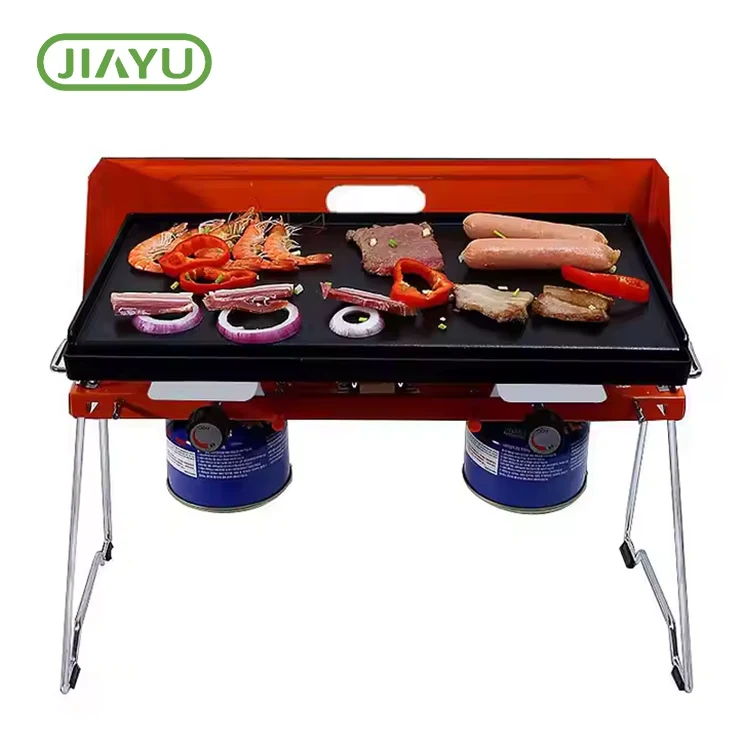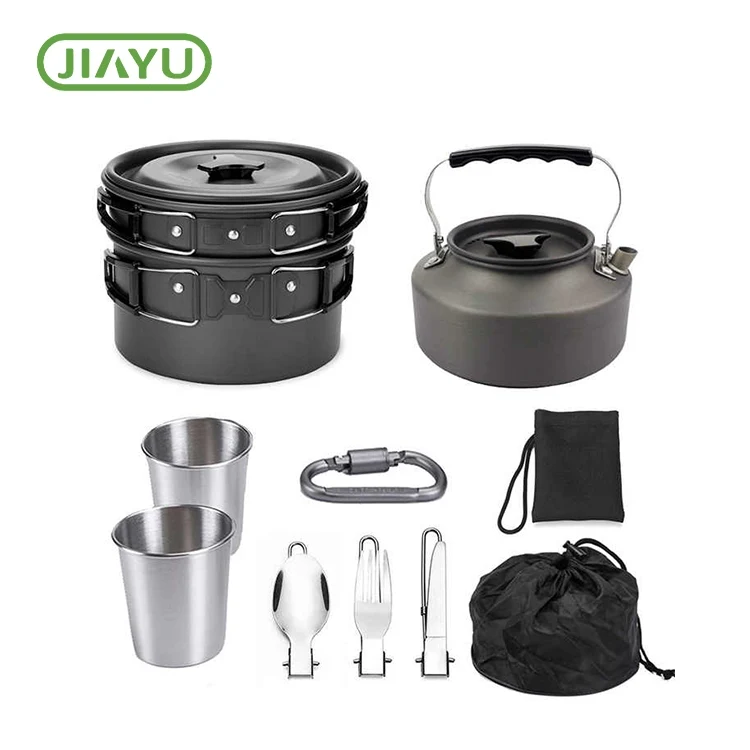
Outdoor cookware is different from kitchen cookware. Being outdoors is physically demanding, and even if you're storing it in a car, it still requires transport and assembly. Therefore, outdoor cookware primarily needs to be lightweight and portable. Outdoor cookware comes in different materials to meet different needs, with varying weights and prices.

1. The more functions within a given storage volume, the better. Because carrying supplies can be challenging when camping, backpack space is at a premium, so excellent storage space and versatility are key.
2. For a given volume, choose lightweight cookware as much as possible for portability. If your budget allows, opt for titanium alloy cutlery; for a more cost-effective option, opt for aluminum cookware.
3. Cooking performance, which primarily refers to quick cooking, good heat retention, and even heating.
4. Ease of use, which generally refers to cookware sets that can handle a variety of cooking requirements.
5. Durability. Coated cookware is generally more susceptible to damage, and aluminum is less durable than titanium and stainless steel.
If you're just backpacking, I recommend packing light. The longer you're hiking, the more minimalist your pack should be. You don't need a pot, but a large cup. You might also bring an alcohol stove set, which contains the stove inside a pot. These sets are easy to pack, lightweight, and take up very little space. You don't need to bring a pot. Or perhaps your hiking destination is somewhat rugged, such as high altitude or snowy mountains. In these locations, you might bring a split gas stove. Again, you'll need a large cup, or even a gas stove set, for easier storage.
If you're driving camping, you'll be at a campsite with lots of friends around. So, you absolutely need to pack everything you need to avoid missing anything that might spoil your day.
1. A pot set, primarily including a stew pot, frying pan, teapot, and other items. The number of pots should be proportional to the size of your stove. If you only have a single burner, more pots won't be enough; three is generally enough. If you're traveling with a large group, you can also buy a set of multiple pots, but you'll need to have several stoves available.

The parameters of Picnic Bowl Cookware Camping Cooking Set
| Item | Parameter Details |
|---|---|
| Material | Metal |
| Metal Type | Stainless Steel |
| Suitable Stove | Gas Stove |
| Lid Type | Stainless Steel Lid |
| Include Lid | With Lid |
| Capacity | 1-2L |
| Model | JY-141 |
| Usage | Outdoor, Camping, Hiking, Travel |
2. A tripod pot holder: While heavier, it looks impressive and provides a warm feeling when camping.
3. A grill pan or sandwich tongs: If you're camping and lure a fish, a grill pan or sandwich tongs are essential. Camping in the wild doesn't feel that much better without some grilling.
4. Steel cups
Outdoor cookware nowadays comes in several different materials, ranging from affordable to expensive. Many people can't tell the difference,
1. Titanium cookware: Lightweight, sturdy, fuel-efficient, and expensive, but it doesn't conduct heat well.
Titanium cookware is currently the most popular type of outdoor cookware. As a raw material, titanium is very light. Despite being extremely light, it's also very strong (comparable to steel) and known for its high corrosion resistance. Titanium pots are strong, but their inherent thermal conductivity is poor, so they're often made very thin, effectively transferring heat without using too much fuel. A persistent issue with titanium cookware is uneven heating, making it easy for beginners to burn food. Another Achilles' heel of titanium is its cost, making titanium cookware a more expensive option. Generally speaking, titanium cookware is considered safe for cooking.
2. Aluminum cookware: Typically larger and lighter, it's cheaper, less sturdy, and generally less durable.
Aluminum cookware is made of alumina and is lighter than titanium. Aluminum pots are better for cooking because they heat evenly, making them a popular choice for kitchen pots and pans. However, aluminum is relatively soft and easily deformed, leaving a shattered appearance after a drop. Aluminum pots are cheaper and generally larger than titanium pots, making them important if you need to boil water or cook for a large group. There are concerns that aluminum can slow intellectual development in children, leading to concerns that using aluminum pots can lead to excessive aluminum absorption and negative health effects. This issue is no longer a concern. Anodizing hardens cookware and makes it more durable, and the aluminum is less easily absorbed, so there's no need to worry. In short, aluminum cookware is the most cost-effective choice.
3. Stainless Steel Cookware: It sounds environmentally friendly, healthy, affordable, and durable, but it's really heavy.
We often hear about 304 stainless steel, used in cups and cookware. This is more common in home kitchens. Stainless steel is wear-resistant, scratch-resistant, and inexpensive, and there's little evidence that it's harmful to cooking. It does contain elements like iron and nickel, which can leach into your food, but the amount is minimal. Gently clean it with water and dish soap. Avoid abrasive steel wool or harsh chemicals.
Non-stick Coating: Not durable and potentially unsafe
Some pans have a non-stick coating, such as Teflon, to prevent food from sticking to the inside of the cooking container. This primarily makes cleaning easier. While convenient, we recommend avoiding any non-stick coating. Once the non-stick coating starts to flake, you'll need to throw it away. There's also a safety concern: perfluorooctanoic acid, or PFOA, used to make non-stick coatings is a suspected carcinogen. However, pans with this coating are rare these days.